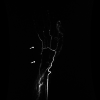Raynaud's Phenomenon: Reviewing the Pathophysiology and Management Strategies
- PMID: 35242466
- PMCID: PMC8884459
- DOI: 10.7759/cureus.21681
Raynaud's Phenomenon: Reviewing the Pathophysiology and Management Strategies
Abstract
Raynaud's phenomenon (RP) is a multifactorial vasospastic disorder characterized by a transient, recurrent, and reversible constriction of peripheral blood vessels. RP is documented to affect up to 5% of the general population, but variation in its prevalence is commonly recognized owing to many factors, including varied definitions, gender, genetics, hormones, and region. Furthermore, RP may be idiopathic or be a clinical manifestation of an underlying illness. Patients with RP classically describe a triphasic discoloration of the affected area, beginning with pallor, followed by cyanosis, and finally ending with erythema. This change in color spares the thumb and is often associated with pain. Each attack may persist from several minutes to hours. Moreover, the transient cessation of blood flow in RP is postulated to be mediated by neural and vascular mechanisms. Both structural and functional alterations observed in the blood vessels contribute to the vascular abnormalities documented in RP. However, functional impairment serves as a primary contributor to the pathophysiology of primary Raynaud's. Substances like endothelin-1, angiotensin, and angiopoietin-2 play a significant role in the vessel-mediated pathophysiology of RP. The role of nitric oxide in the development of this phenomenon is still complex. Neural abnormalities resulting in RP are recognized as either being concerned with central mechanisms or peripheral mechanisms. CNS involvement in RP may be suggested by the fact that emotional distress and low temperature serve as major triggers for an attack, but recent observations have highlighted the importance of locally produced factors in this regard as well. Impaired vasodilation, increased vasoconstriction, and several intravascular abnormalities have been documented as potential contributors to the development of this disorder. RP has also been observed to occur as a side effect of various drugs. Recent advances in understanding the mechanism of RP have yielded better pharmacological therapies. However, general lifestyle modifications along with other nonpharmacological interventions remain first-line in the management of these patients. Calcium channel blockers, alpha-1 adrenoreceptor antagonists, angiotensin-converting enzyme inhibitors, nitric oxide, prostaglandin analogs, and phosphodiesterase inhibitors are some of the common classes of drugs that have been found to be therapeutically significant in the management of RP. Additionally, anxiety management, measures to avoid colder temperatures, and smoking cessation, along with other simple modifications, have proven to be effective non-drug strategies in patients experiencing milder symptoms.
Keywords: cold fingers; hereditary raynaud phenomenon; pathology; raynaud disease; rheumatology.
Copyright © 2022, Nawaz et al.
Conflict of interest statement
The authors have declared that no competing interests exist.
Figures


References
-
- Raynaud's phenomenon. Wigley FM, Flavahan NA. N Engl J Med. 2016;375:556–565. - PubMed
-
- Raynaud's disease, or local asphyxia and symmetrical gangrene of the extremities. Tannahill TF. https://www.ncbi.nlm.nih.gov/pmc/articles/PMC5924192/ Glasgow Med J. 1888;30:425–429. - PMC - PubMed
-
- Susol E. Manchester: The University of Manchester; 1999. Genetic Investigation of Primary Raynaud's Phenomenon and Systemic Sclerosis.
-
- Raynaud phenomenon in children. Goldman RD. https://www.ncbi.nlm.nih.gov/pmc/articles/PMC6467660/ Can Fam Physician. 2019;65:264–265. - PMC - PubMed
Publication types
LinkOut - more resources
Full Text Sources
